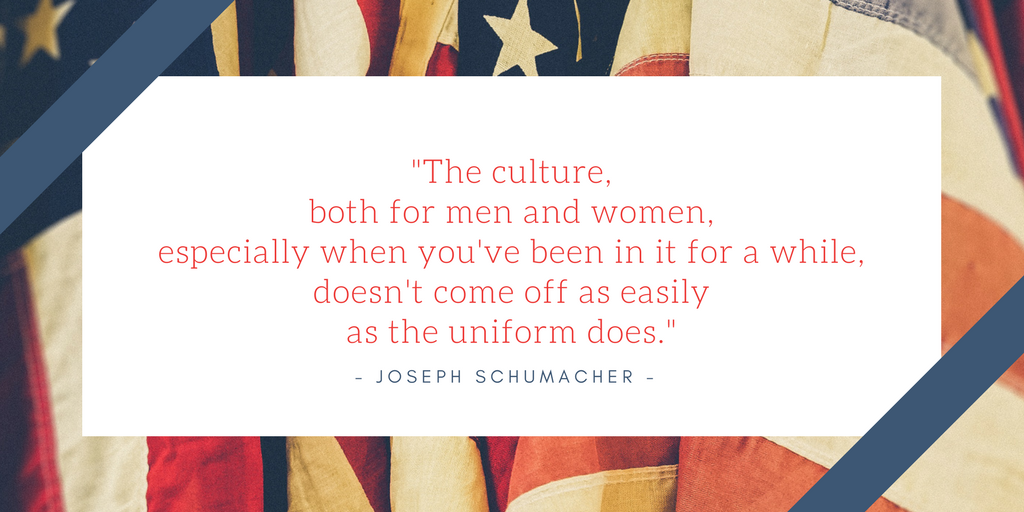On November 11, campuses nationwide will recognize veterans for their service. As with all days of recognition and remembrance, having a “day” is symbolic — the idea isn’t to have this be the only day we support those who have served, but to have it be a representation of our ongoing commitment to them.
There’s more nuance to our commitment to our student veterans than we often recognize, which makes intentional support efforts all the more important. With a wide range of research detailing how schools are succeeding or failing to support these students, there’s a lot of information to wade through to determine the best practices. Further, with more veterans coming back to campus every year, and a changing landscape for those who are currently serving, the mark for defining effective support is constantly shifting.
To gain a better understanding of effective models of service and how they’re adapting, I reached out to Joseph Schumacher, the Program Manager for Montana State University’s Veterans Support Center.
Joe and I go way back, serving together as student leaders in a variety of roles since 2012. When we first met, I was in the SGA and Joe was a student employee with MSU’s VOICE Center (Victim Options in the Campus Environment]) and a student mentor for fellow student veterans. Through our friendship, I gained a better understanding of how challenging the transition back to civilian life and campus can be, and was able to use this insight as I represented a growing body of student veterans through my role in the SGA.
Fast forward 5 years, and we’ve both graduated, and Joe has earned his role as the leader of the MSU Veterans Support Center. When I reached out for an interview, he was more than accommodating, chatting with me for an hour about what MSU is doing, and how campuses nationwide can support this growing body of students and their families.
Challenging our misconceptions
I started off by asking about some of the current myths and misconceptions that currently surround our student veterans, and he took me back to Sociology 101 to think about all of the different identity sets that we put out to the world at any given time.
“I’m a father, a vet, a lifelong student…these are pieces of my identity set. It’s common and it makes sense when trying to serve a certain population, to put them into box and generalize by saying “this is how you do it.” While you may hit it on the head sometimes, more often than not you do a disservice by saying ‘this is best way to serve all vets.’”
With each passing year, the “face” of our veterans changes in conjunction with our shifting military involvement abroad. Joe himself served overseas in the mid 2000s, during a time where it wasn’t uncommon to meet vets with multiple deployments, who came back to school with 3 or 4 trips to Iraq or Afghanistan.
By 2011 and 2012, there were fewer deployments heading overseas, so a student could be coming to campus after serving their four-year term. Some of these students may have never seen combat, and some may have never left the nation. There’s been a growing body of research demonstrating that these veterans need different support, as some can even feel ashamed of their service, or for using their GI bills when they didn’t serve abroad. To properly serve these students, we need to adapt the way we understand their service, and then shift our service to meet their changing needs.
Shifting our understanding of current veterans is the first part of the equation here, and we must bolster that by unlearning some of the sensationalism that exists from the media about veterans.
Joe explained how sometimes this can lead to faculty or staff members almost pitying veterans, or walking on eggshells, which is neither necessary nor productive. He also noted that there will always be the student veterans who have served their time and are anxious to move on, leaving that part of their life in the past — and we need to honor that. Talking to them using the phonetic alphabet, or having the rest of the class stand and applaud them on a regular basis doesn’t honor their wishes as they integrate back into their life.
The most helpful piece of advice Joe gave here was to limit reliance on overgeneralizations, and just get to know these students. The more you get to know them and their experiences, the more depth there is to your understanding of their needs and how you can best support them.
While relying on generalizations to understand students isn’t helpful, relying on general rules to guide how we support them can be.
One of the things we chatted about was one a piece of info I learned from the previous Director of the Disability Resources & Veterans Support center before she retired. During a presentation to some faculty members, she discussed how it’s not uncommon for a veteran to walk into every single room after their service and scope doors, windows, and exits, scan for red flags, etc., and often times choose seats near an exit, or that ensure they had a wide vantage point of the entire room and the door.
Joe confirmed that while this isn’t uncommon, it’s a point that needs to guide faculty as they think about how to be approachable for students in need of any type of accommodation to ensure their comfort and focus in class. This could look like a vet requesting to sit at the back of class consistently, someone with visual or hearing impairments needing to be at the front of class, or a sexual assault survivor feeling uncomfortable in the center of class, or with their back to the door.
It’s critical that faculty and staff use whatever tools they have to support students — whether it’s a syllabus, website, or FAQ packet at Orientation, each of these opportunities is a chance to let students know we’re here to help them be successful and that we have an open door policy to figure out what that might look like for each individual student’s needs.
It takes a village
This obviously does look different depending on the size of your campus and support staff – I recognize that not every campus has funding for a full Veterans Support Center and several full time staff. That’s why it’s important for everyone to see student success as a part of their mission, especially on the campuses with fewer support staff. Even on a campus with a full time staff person dedicated to supporting our vets, it still takes a village.
The village mindset is demonstrated in how Joe and his team were able to get the registration process updated to ensure vets could get their paperwork into the VA earlier, so they could focus on school instead of having to be stressed about making ends meet. True to his nature Joe begins the discussion about the VA with an empathetic review of the administration’s responsibilities, reminding me that they serve 18-year-olds just enlisting all the way up to 90+ year old World War II veterans.
Because of this, he tells me it’s the responsibility of he and his team to figure out the government machine and communicate those timelines and deadlines to students effectively.
The impact of this is huge, “Because if I’m a student, I’m worried about finances and tuition and housing, it’s hard to focus on school, especially if have a family and other responsibilities. So one of the easiest things we can do is take that big stressor [understanding VA timelines and paperwork] off their plate to eliminate that emotional and mental energy.”
To make this happen, he helped the academic advising council and the registrar’s office understand the VA timeline and communicated how this shift leads to student success. To ensure the financial success of these students, they needed to register early and get their ducks in a row a few weeks earlier than the existing timeframes allowed. By combining that with the data that supports how veterans were already at risk of dropping out because of finances, the partners around campus understand that accommodating these students is all in the name of the larger goal — increasing student success and helping students graduate.
As campuses are able to adapt and develop processes like this to support student veterans, then we’re able to think about expanding into some of the second- and third-tier areas of support to ensure student success:
- Career coaching – Working with career coaches or advisors to understand transferable skills and connect those to workforce needs
- Financial success counseling – Working with the folks in financial aid, and using resources distributed by the VA to help provide advice catered to veterans, their spouses, and their dependents.
- Childcare – Identifying cost-effective childcare options, or helping to schedule classes around childcare needs
Some of these are areas where veterans support staff on larger campuses can help move the needle forward. Joe mentions that his team is always “trying to find areas where other offices don’t have time (or perspective) to see these things as a need, so we can drive those and provide the bandwidth.”
Intersecting Identities
One of the unique aspects of Joe’s experience is the intersection of his previous work for the VOICE Center, where he helped to do preventative education about sexual and domestic violence on campus. Ever since the Invisible War released in June 2012, there has been a larger national conversation about the rates of sexual assault in the military and the lasting impacts of sexual violence, including higher suicide rates for female veterans. With Joe’s experience, he’s able to have a larger impact in assisting our veterans with intersecting identities who might need varying levels of support.
Joe was previously married to a veteran, and he spoke about the days he saw firsthand the challenges she faced that he was immune to. There were “days she’d come home exhausted, not from her job, but from just working in the boys club. She’d come back and I’d barely recognize her because she’d become a different person to just survive that day, and fit in. That culture, both for men and women, especially when you’ve been in it for a while, it doesn’t come off easily as the uniform does.”
Part of the solution is focusing on the diversity of the veterans that your campus serves and understanding how these nuances impact them as they reintegrate back into civilian life and school. We should recognize that women who served likely had more experiences where they were told they couldn’t do certain jobs, or LGBTQ folx were told they couldn’t be open about who they are.
These challenges, combined with the exhaustive hierarchy and abuses of power in the chain of command can inhibit them reaching out for the help they need. And to top it all off, the shaming culture of “not talking about it” can keep people from reaching out for help. So for student veterans who are bringing all of that back to campus, and processing it in a new place, on top of new challenges, it can be incredibly difficult.
It’s important to let them know we’re here to support them, that we have avenues and resources for them that are transparent and upfront. The more we can normalize reaching out for help, and reaching out often, the better off they’ll be since they won’t just see us as someone who is here for them only when they’re in crisis.

If your campus has a dedicated space for veterans, it’s also important to recognize that some of the unchecked masculinity and bravado can find its way into these spaces, creating a culture that might not be conducive for everyone to feel comfortable coming in for support or camaraderie.
“I fought the enemy, but also oppressive sexism in the military day after day for years, I’ll be damned if I do it on campus too.” — Joe, paraphrasing a female veteran who spoke with him as she returned to campus
As Joe’s team has adopted these changes to make the Veterans Support Center more inclusive, he remarked that he’d seen an incredible uptick in the amount of female veterans and dependents coming in and out of the center — it’s exciting but also makes him feel a twinge of sadness as he realizes how much it’s been missing before.
Making strides
As the role of veterans support services on campus continue to adapt, Joe made a really important statement about simply being being there for students when they need us.
“As an administrator you could get hurt by saying you really didn’t do much to influence [students], but that’s the thing — I just want to make sure they reach out when they need to… some don’t for any number reasons, maybe their service is over and they want to leave that part of their life behind. But for some, it’s [the Vet Center] what keeps them here, it’s what helps make the transition easier.”
The times they need us might be simple — a quick question, a connection to another resource or office on campus. Other times, those needs might require more emotional labor, or bigger requests to our networks. The important thing is that they know we’re there for whatever it is they need.
Unfortunately, there’s no easy “top three” list of things we can do to ensure our success. Successfully engaging and supporting student veterans requires us investing time and energy into our students to understand what they need. It requires empathy and intention as we create policies, and enlisting help from other departments across campus so that their support is consistent.
The transition back to civilian life will look and feel different for every single veteran, and it’s our job to meet them where they are with the support they need.
There are some great resources for campuses to utilize:
American Council on Education | By the Numbers
National Veteran Education Success Tracker





